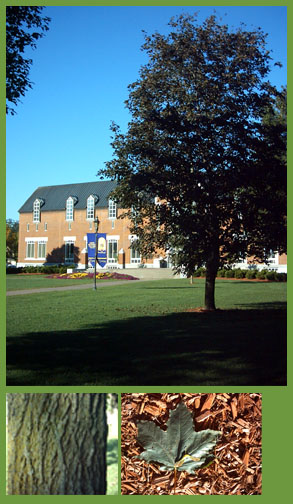Class: Rosidae
Origin: Sapindales
Family: Aceraceae
The Norway maple tree is native to continental Europe and now is found in the northeast United States from Maine to Minnesota and south from Tennessee to North Carolina. They grow in every state in New England and are also found in Washington and Idaho. They usually grow 40-70 feet tall, but can reach heights of 100 feet and have a diameter of 1 to 2 feet. The leaves and branches create a large and dense oval crown making it a great shade tree, and in late October the normally green leaves change to yellow, but some subspecies like the one on campus have leaves that change to an almost deep purple color. Leaves are 2 to 8 inches and resemble a Sugar Maple but they have more teeth around the margin. Buds are large and blunt. The fruit and seeds are wind dispersed and the fruit spins like a helicopter propeller when released from the tree. The wings on the fruit are nearly 180° from each other. When a leafstalk (petiole) is broken from a branch a milky sap is visible. The bark is grayish-black and has shallow ridges and furrows. It is adaptable to many soils can be easily transplanted and tolerant of urban conditions. The shallow root system competes with lawn grass. Since it is not native it can out compete native tree species in the forest canopy, thus reducing diversity and changing the structure of forest habitats.
Back |
 |